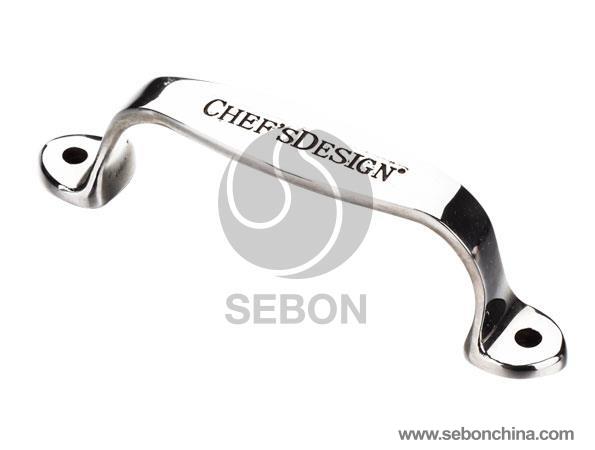
- [email protected]
- 0086-371-86560898

Contact us now for any need or questions about our company or product.


Sand casting is a casting method, mainly for sand casting foundry casting mold manufacturing method and core sand, sand casting can be divided into: sand manufacturing, manufacturing core, combined boxes, pouring. Foundry sand is the main ingredient: red mud, from the hard sand, water glass, bonding agent.
A casting method
1.1 Sand Casting
Sand casting is one of the most widely applicable surface solidified molding method, which is suitable for almost all parts production. However, because of the low thermal conductivity of the sand mold, the liquid metal in the solidification rate is slow sand, especially for some of the larger wall thickness of the casting, the casting can cause the internal coarse grains, and prone to segregation tissue components, thereby reducing Mechanical properties of the material. On the other hand, sand casting surface roughness of casting solidification molding methods compared with other high.
The basic process is as follows sand casting process diagram has major manufacturing appearance and core box, configure, sand and core sand, modeling, building core, combined type, casting, cleaning and inspection shakeout. Which shape (core) is the basic process of sand casting.
1.2 manual modeling
Tight sand and die-done by hand. Advantages hand molding is flexible operation, simple technology and equipment, production preparation time is short, strong adaptability, can be used in a variety of size and shape of the casting. The shape of the artificial hand requires high level of technology, low productivity, high labor intensity, unstable quality of castings, mainly for single-piece, small batch production. Many hand-modeling approach, a whole mold shape, parting modeling, dredging shape, live a block shape, blade shape and so on.
1.3 Mechanical modeling
Tight sand molding machines and die-finger two important processes mechanically complete. Mechanical modeling mechanized, thus high productivity, good casting quality. Styling by compaction machine is divided into:
1) Compaction Compaction shape modeling is to use pressure head pressure sand box sand compaction, fill sand box sand first aid box, head down to the sand compaction, the auxiliary frame is used to compensate for tight during the molding sand is compressed solid height.
2) the use of shock vibration and impact modeling conducted for compaction of sand, the sand box sand filling, shock piston lift table together with sand box a certain height, then fall, and the cylinder impact, relying on the whereabouts of the impact of sand produce compaction effect.
3) is equipped with throwing sand molding head rotor blades throwing sand, sand from the belt conveyor is fed continuously to the blade, the blade rotating at high speed into the sand sand one group, when the sand with the blades to the outlet of the group when the centrifugal force, high-speed sand thrown into the sand box, while sand filling and compaction is completed.
2, casting auxiliary materials
2.1 Casting Coatings
The basic composition of a coating
Casting the dispersion of the coating by a variety of different types of material, usually a refractory powder, liquid carrier, suspending agent, binder and additives to improve certain properties of the composition.
Role 2 coatings
Sand casting surface coated with a thin layer of coating material cavity and its role in the sand sand cores:
1) filling the pores of the sand and the sand core surface, to avoid casting surface roughness, mechanical sticky sand, chemical sticky sand, the casting surface roughness to get the best improvement.
2) prevent or reduce the production of castings and sand on the other casting defects or quality problems.
3) coating to produce metallurgical effect, improving the surface properties of the situation and the inherent quality of the casting.
3, casting defects and common control
3.1 shrinkage and shrinkage
(1) The basic reason is the liquid produced by shrinkage shrinkage shrinkage of the alloy and the solidification shrinkage is much greater than the value of solidification shrinkage values. Shrinkage condition is formed in a thermostat metal crystals or very small temperature range.
(2) shrinkage shrinkage shrinkage is essentially concentrated dispersion of the very large number of small craters. It is distributed over the entire cross-section, generally in the axial region of the wall of the casting, hot section of the riser and the gate near the base, often below the concentration distribution of shrinkage. Same basic form shrinkage causes and shrinkage, mainly in the crystallization conditions over a wide temperature range, the lake was like solidification mode and gold.
(3) to prevent shrinkage and shrinkage
3.2 stomata
Internally casting surface appears smooth hole, irregular shape, with a layer of white or color dark, sometimes covered with iron oxide. Measures: the intake air amount reducing melting metal to reduce the sand in the casting process gas evolution to improve the casting structure, and the core sand to improve breathability, so that the smooth discharge in the gas type.
3.3 Slag stomata
Due to poor casting slag, slag easy pouring temperature is too low float, or full stop pouring gate, slag and molten metal into the cavity together. Cause internal casting irregular hole, the hole is not smooth inside filled with slag. Preventive measures: raise the temperature of the liquid metal to reduce slag viscosity, improve the ability of slag pouring system.
3.4 cold shut
(1) defect feature: There is a gap or not fully integrated in the casting pits, which is the junction of the edges smooth.
(2) Cause: Casting poorly designed, cast thin walls, poor mobility alloy, pouring temperature is low, the casting speed is slow, improper gate size or arrangement, with interrupt casting.
(3) preventive measures: improving the pouring temperature and casting speed, improve casting systems, continuous flow when pouring.
Conclusion:
Casting cores manufacturing process is very important, according to the type (core) sand characteristics develop appropriate solutions, the key is the last step pouring, pouring temperature, the speed to fit, prevent some defects, but also with a wealth of experience and manipulate technology This requires insight in daily practice.